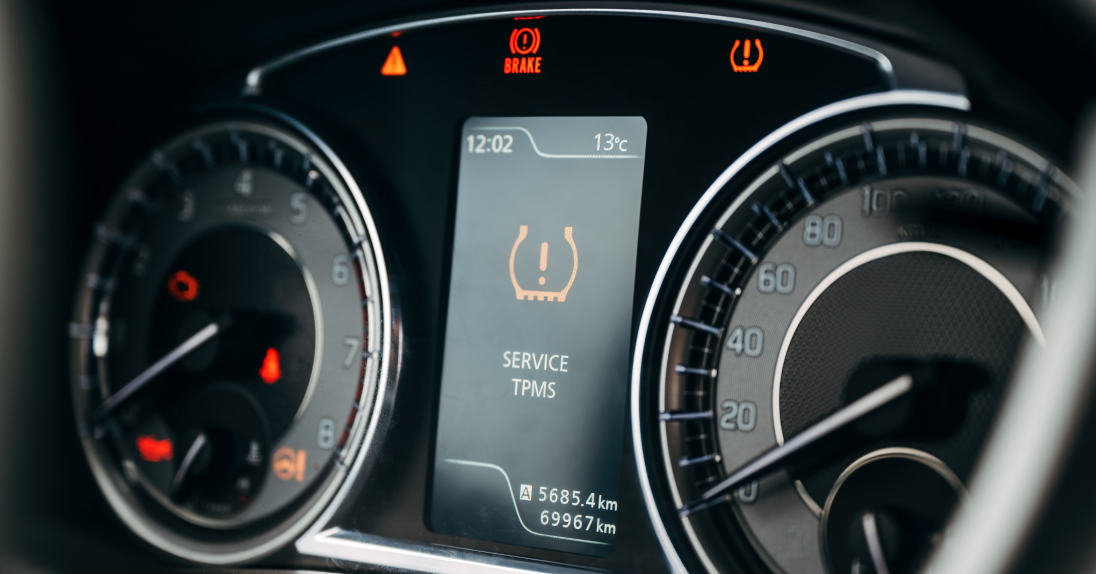Has it ever crossed your mind as to how vehicles can detect their own tyre pressures? That remarkable ability lies within tyre pressure sensors - an innovative technology that plays a pivotal role in ensuring safety while driving, boosting efficiency and maximizing the lifespan of tyres. In this informative blog post we'll be taking an adventurous dive into the world hidden behind these compact yet powerful creations - exploring their mechanics as well as highlighting their many benefits. Additionally we'll show you precisely why they entitle you to complete control over your vehicle when out on the road. Get set for a mesmerizing journey unraveling how these devices work their magic! Let's start by understanding what they are, followed by how to use them to your advantage.

For all drivers who value their safety and optimal performance while driving their cars, you'll appreciate how Tyre Pressure Monitoring Systems (TPMS), commonly known as tyre pressure sensors work to keep things in check. These dependable electronic devices continuously monitor all four wheels' air-pressure conditions providing real-time feedback to detect even the slightest variations instantly. You'll find these essential components located inside vehicle tyres either on valve stems or integrated into them; working together with central systems by displaying precise readings about every wheel affected by TPMS techs to alert drivers when needed—staying updated with TPMS guarantees accurate data output and safer driving on the road.
Certainly! Tyre pressure sensors prove beneficial in any situation, and with practice, one can maximize their utility. These sensors offer numerous advantages that establish them as essential equipment for all vehicle owners. We would like to present a few compelling justifications for utilizing a tyre pressure sensor:
To appreciate the magic of tyre pressure sensors, let's delve into their mechanics and understand how they operate. It might sound complicated at first, but it is not, trust us. Tyre pressure sensors use a combination of technology to measure and transmit tyre pressure data to the central monitoring unit. Here's a breakdown of the key components:

Tyre pressure sensors play a vital role in ensuring road safety. They continuously monitor your tyre pressure keeping you informed about any deviations or potential issues that may jeopardize your safety. Heres' how these sensors contribute to a safer driving experience:
Acting as an early warning system tyre pressure sensors alert you to significant changes in tyre pressure. Whether its' a slow leak, sudden loss of pressure, or overinflation. The sensors detect these deviations and promptly notify you. Enabling immediate action. With these sensors you have real time visibility into your tyre pressure eliminating the need for manual checks or guesswork.
They provide accurate and up to date information. Allowing you to promptly address any issues and prevent potential tyre failures. Properly inflated tyres are crucial for optimal vehicle control. Tyre pressure sensors ensure that your tyres maintain the recommended pressure levels enabling better handling improved traction. And shorter braking distances. By keeping you in control of your vehicle during various driving conditions these sensors enhance overall safety.
Tyre pressure sensors offer a multitude of benefits beyond safety. Let's take a closer look at some of the advantages that these innovative devices bring to your driving experience:
Tyre pressure sensors eliminate the need for manual tyre pressure checks, saving you time and effort. You no longer have to rely on guesswork or external gauges. The sensors provide automatic and accurate readings, making it convenient to monitor and maintain the optimal tyre pressure.
By ensuring proper tyre inflation, tyre pressure sensors help you save money in the long run. Properly inflated tyres wear evenly, reducing the frequency of tyre replacements. Additionally, maintaining the correct tyre pressure improves fuel efficiency, saving you money at the pump. With tyre pressure sensors, you can enjoy peace of mind knowing that your tyre pressure is constantly monitored. You no longer have to worry about potential tyre failures or unexpected pressure changes. The sensors keep you informed, allowing you to drive confidently and focus on the journey ahead.
So, Tyre pressure sensors are a remarkable technology that enhances safety, performance, and convenience for every driver. They can be utilized for your needs and they can give you valuable information about your car. By constantly monitoring your tyre pressure, they provide valuable information, allowing you to maintain optimal tyre conditions and ensure a smooth and secure driving experience. So, embrace the magic of tyre pressure sensors, and let them keep you in control of your vehicle, one tyre at a time.